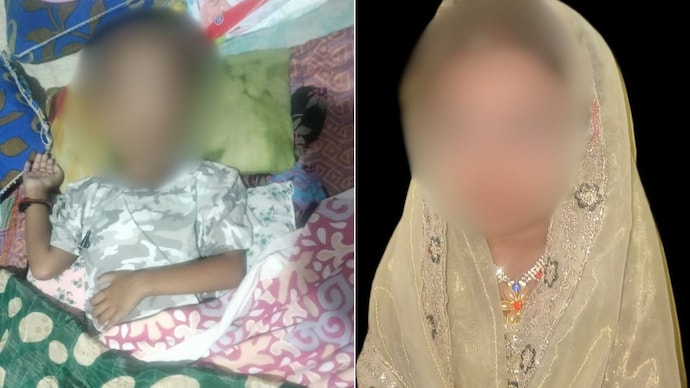In a deeply emotional and heartbreaking incident, a four-year-old girl from Karnataka has died of rabies nearly four months after she was bitten by a stray dog. The tragedy has stirred widespread sorrow and anger, once again bringing attention to the urgent need for better animal control and healthcare measures in the state. The child, who had initially been treated for the bite, later developed severe symptoms associated with rabies, including restlessness, fever, and difficulty swallowing. Her death has left the local community devastated and raised serious concerns about the adequacy of preventive measures.
The incident sheds light on the grim realities of rabies, a disease that continues to claim lives in India despite being entirely preventable through timely vaccination. In this case, questions are being raised over whether the child received the complete post-exposure prophylaxis, which is crucial in preventing the virus from spreading to the brain. Health officials have pointed out that many families are still unaware of the necessity of follow-up vaccinations after the initial treatment, which results in tragic outcomes. The girl’s story highlights the gaps in awareness, medical follow-up, and the broader failure to manage the stray dog population effectively.
Local residents have expressed their anger at authorities for failing to control the rising number of stray dogs in their neighborhoods. Karnataka, like many states, has been struggling with increasing cases of dog bites, and this tragedy has further fueled demands for stricter action. Community leaders insist that the government must urgently strengthen both public health infrastructure and stray animal management policies. For grieving parents and neighbors, the girl’s untimely death is not just a personal loss but a collective reminder of systemic failures that put vulnerable children at risk.
The death of the four-year-old girl has triggered a wave of grief across her community, with residents openly voicing frustration at the lack of proactive measures taken by authorities. Neighbors have described the child as lively and full of promise, making her sudden death even more heart-wrenching. Many have questioned why, despite decades of warnings about rabies, the disease continues to take lives in preventable circumstances. For the grieving family, the loss is immeasurable, and their tragedy has turned into a public reminder that children remain the most vulnerable when systemic lapses occur in healthcare and animal management.
Civil society groups have also stepped in to amplify the issue, highlighting how rabies-related deaths often go unnoticed until they involve young children. These groups argue that the root of the problem lies in the fragmented approach toward animal population control, where sterilization programs are inadequately implemented. They point out that while municipalities frequently announce initiatives to manage stray populations, poor execution and limited funding result in minimal real change. The girl’s death, they argue, should serve as a wake-up call for comprehensive planning and consistent action rather than short-term fixes.
Healthcare professionals have expressed concerns over the lack of awareness regarding rabies vaccines among the general public. Many families tend to believe that a single injection after a dog bite is sufficient, which is a dangerous misconception. Doctors stress that the full course of vaccinations, including rabies immunoglobulin in certain cases, is critical for protection. They emphasize that robust awareness campaigns, particularly in schools and rural areas, could save countless lives. Without such efforts, preventable deaths will continue, creating recurring cycles of tragedy.
The incident has also sparked debate about the balance between animal rights and human safety. Animal welfare activists argue that stray dogs should not be indiscriminately culled, as mass killings are neither ethical nor effective. Instead, they advocate for systematic sterilization, vaccination drives, and responsible pet ownership campaigns. However, parents and local residents fear for their children’s safety and demand immediate, visible solutions. This tension highlights the need for policies that respect animal welfare while prioritizing public safety through sustainable, humane strategies.
Government officials, responding to growing criticism, have promised investigations into the medical treatment the girl received. They have pledged to determine whether proper procedures were followed and whether lapses occurred in administering the full vaccination schedule. Additionally, local authorities have assured citizens that renewed efforts will be made to control stray populations. However, past promises have often faded without significant impact, making residents skeptical. This tragedy has increased public pressure, and many are now calling for accountability mechanisms to ensure that commitments translate into measurable results.

Legal experts suggest that the government could face litigation if negligence in providing timely medical care is proven. They argue that the right to health is a constitutional guarantee, and preventable deaths such as this amount to violations of fundamental rights. If the girl’s parents choose to pursue legal action, it could set a precedent for stronger accountability in rabies-related cases. This development may also push health authorities to strengthen protocols for handling dog bites, making it mandatory to track and monitor each case until treatment is complete.
Rabies: A Preventable but Neglected Threat
Medical experts emphasize that rabies, once symptoms appear, is nearly always fatal, making prevention the only effective safeguard. The disease spreads through the saliva of infected animals, most commonly through dog bites. In India, rabies remains a public health challenge, with thousands of cases reported annually despite the availability of vaccines. This particular case underscores the consequences of incomplete medical intervention and the dire need for widespread awareness campaigns. Experts urge that every dog bite, no matter how minor, should be treated as a medical emergency requiring immediate and complete vaccination.
Public health activists argue that the state government needs to adopt a multi-pronged strategy to address rabies prevention. This includes mass vaccination of stray dogs, stricter animal control programs, and stronger public health campaigns educating families about post-bite procedures. They stress that awareness drives should be targeted at rural and semi-urban populations where access to healthcare is limited and misinformation is rampant. By treating rabies as a public health emergency, Karnataka can prevent more such avoidable tragedies, ensuring that no child suffers due to gaps in preventive care and community negligence.
A Collective Call for Accountability and Action
The young girl’s death has become a rallying point for citizens demanding accountability from the government and municipal bodies. Parents and activists alike are urging authorities to act decisively in strengthening rabies prevention measures and curbing the menace of stray dog attacks. This tragic case is not just an isolated incident but a reflection of systemic gaps in health awareness, animal management, and administrative responsibility. For Karnataka, this is a moment to recognize the urgency of reforms and ensure that no family has to endure such a heartbreaking loss again.

Psychologists warn of the deep psychological impact such tragedies can have on communities. Children who witness or hear about the death of a peer from rabies may develop fear of animals, reluctance to play outdoors, or anxiety about their safety. Parents too may carry lingering guilt or worry about whether they are doing enough to protect their children. These mental health consequences extend beyond the immediate family, creating long-term trauma in neighborhoods affected by such incidents. Addressing these impacts requires both community support and professional counseling in affected areas.
National health statistics show that India continues to account for more than a third of global rabies deaths each year. Despite being a country with advanced medical facilities in urban centers, rural and semi-urban regions struggle to access even basic preventive care. Experts argue that this disparity reflects broader inequities in healthcare delivery, where the poor and marginalized remain disproportionately affected. The Karnataka case, therefore, is not just a local tragedy but also a stark illustration of the wider failures in ensuring equitable health access across the country.
This incident has reignited calls for a nationwide rabies elimination program with stricter deadlines and accountability measures. Public health activists suggest that India should aim for zero rabies deaths by 2030, in line with World Health Organization goals. Achieving this target requires interdepartmental collaboration between health ministries, municipal corporations, veterinary services, and educational institutions. By coordinating efforts across sectors, the government can prevent further tragedies while building long-term resilience against rabies and other zoonotic diseases. The Karnataka girl’s death could serve as the catalyst for such national-level commitment.


At its core, the heartbreaking loss of this young life reveals how preventable tragedies continue to claim innocent victims when awareness, healthcare, and governance fail to align. Her story now stands as a symbol of both grief and urgent responsibility, reminding society that every child’s safety should be paramount. Unless immediate steps are taken to close gaps in medical follow-up, stray dog management, and public awareness, similar stories will repeat themselves. For Karnataka, and for India as a whole, this incident is a solemn call to action—one that must not be ignored.
Follow: Karnataka Government
Also read: Home | Channel 6 Network – Latest News, Breaking Updates: Politics, Business, Tech & More

